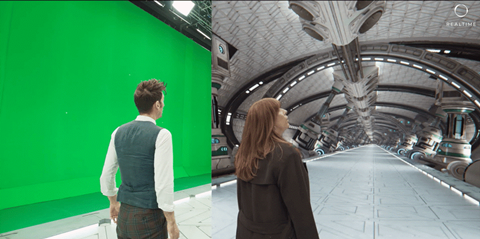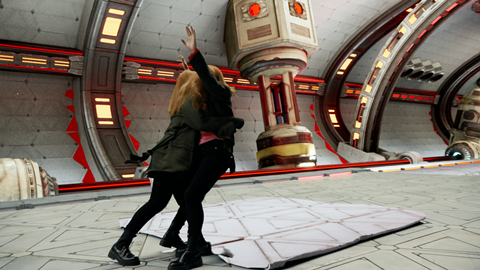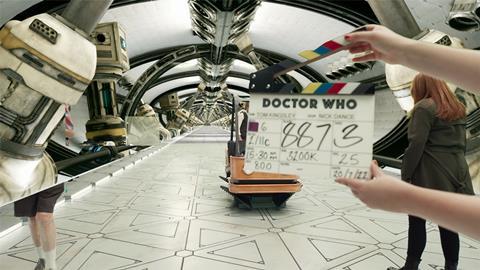VFX house provided virtual production services and CG for Wild Blue Yonder episode

Realtime has revealed the work it put into 324 VFX shots for the Wild Blue Yonder episode of Doctor Who’s 60th anniversary special series.
In collaboration with Bad Wolf and Painting Practice, th VFX house provided virtual production services and futuristic CG for the episode - which sees the return of the much-loved pairing of David Tennant in the role of The Doctor and Catherine Tate as Donna.
The episode aired on BBC1 on 2 December as the second episode of the three-episode anniversary series, with the finale to come on 9 December. You can read about how Untold Studios created a creature called the Meep for the first episode here.
Jonathan Rawlinson, head of episodic at Realtime, explained, “As huge fans of the show, we are honoured to be involved in the anniversary celebrations. We were able to support the production from the shoot onwards; bringing our experience in virtual production and getting creative with a range of very cool futuristic sci-fi scenes in postproduction. It was a lot of fun, and we have really enjoyed working with VFX producer Will Cohen, executive producers Phil Collinson, Joel Collins and the whole team at Bad Wolf and Painting Practice on this amazing episode from the showrunning legend, Russell T Davies.”
The episode is mostly set on a spaceship, featuring a long, complex corridor visualised by design studio Painting Practice and bought to life by the Realtime team. With Tennant and Tate shot against green screen, Realtime developed a virtual camera to show the director and DOP a live key with the talent comped onto an Unreal environment. The live comps could be recorded and played back on set.
Alongside the real-time virtual production asset, a higher fidelity version with an identical layout was used to render the final background image.
James Coore, VFX supervisor, said, “Once we knew that the set had to be created digitally, we needed to find a creative solution of rendering the scenes. As most of the episode is set against this spaceship environment, we had a large volume of shots to work with and the audience expects a high level of quality. We partnered with our friends at Mo-Sys to provide camera tracking on set and worked in Unreal Engine to save us time. Luckily we’ve got the in-house experience to work within these cutting-edge technologies and are thrilled with the final result.”
Mo-sys’ NearTime, its automated re-rendering service for on-set virtual production, was part of the help Coore mentioned the company provided. Painting Practice and RealTime approached Mo-Sys in 2022 about forming a new cost-efficient workflow for a particularly VFX-heavy special episode of Dr Who, and Mo-Sys technical director James Uren explained, “This ambitious diamond anniversary Dr Who special was set to have more than 250 VFX shots, meaning traditional VFX approaches would be cost-prohibitive. So, we had to think differently.”

This involved putting together two formerly separate workflows.
RealTime and Mo-Sys had recently collaborated on Netflix production Dance Monsters, where six cameras and eight monster characters were combined in real-time - also using the Unreal Engine and Mo-Sys VP Pro, to film it as a live light-entertainment show. As part of this Mo-Sys and RealTime developed a pipeline for transferring the precision camera and lens tracking data from Mo-Sys StarTracker through to post-production, to help automate and speed up the VFX workload.
Meanwhile, in parallel and in partnership with AWS, Mo-Sys had built and patented its NearTime solution. NearTime offers a dual workflow which enables automated Unreal re-rendering in the cloud. Tracking data is re-rendered with background plates and delivered back with increased quality and/or resolution in the same VFX delivery window, while making on set renders available for real-time feedback.

Putting pre-vizualisation, on-set camera tracking, real-time pre-viz, NearTime rendering and automated VFX pipelines together helped the efficiency of the Doctor Who production.
Other challenges faced by Realtime for the episode included bespoke gags, CG-enhanced body contortion, the explosive finale, and the Tardis apparition. The team also collaborated with Painting Practice’s Dan May and Showrunner Russell T Davies on a reimagining of the title sequence, which features the Tardis time-travelling through an ethereal vortex.







No comments yet